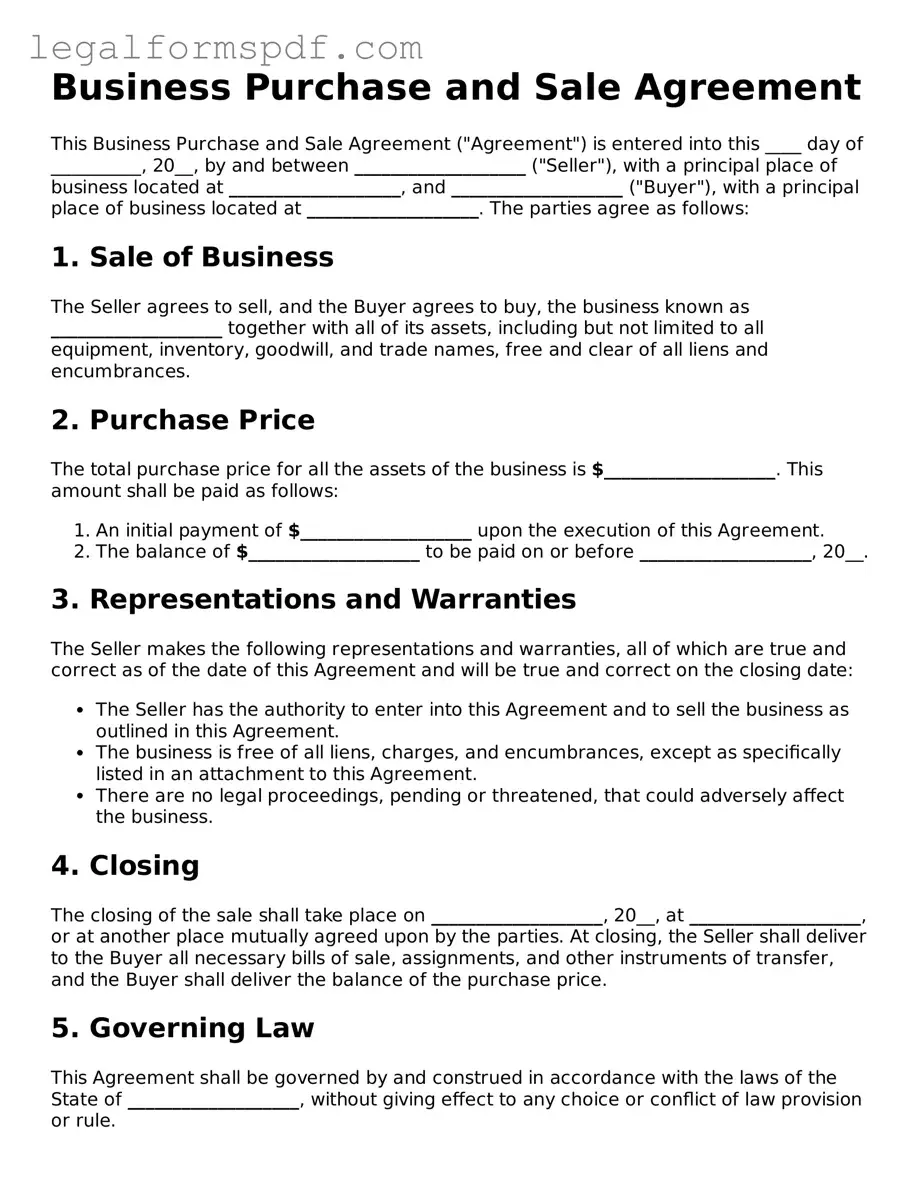Business Purchase and Sale Agreement
This Business Purchase and Sale Agreement ("Agreement") is entered into this ____ day of __________, 20__, by and between ___________________ ("Seller"), with a principal place of business located at ___________________, and ___________________ ("Buyer"), with a principal place of business located at ___________________. The parties agree as follows:
1. Sale of Business
The Seller agrees to sell, and the Buyer agrees to buy, the business known as ___________________ together with all of its assets, including but not limited to all equipment, inventory, goodwill, and trade names, free and clear of all liens and encumbrances.
2. Purchase Price
The total purchase price for all the assets of the business is $___________________. This amount shall be paid as follows:
- An initial payment of $___________________ upon the execution of this Agreement.
- The balance of $___________________ to be paid on or before ___________________, 20__.
3. Representations and Warranties
The Seller makes the following representations and warranties, all of which are true and correct as of the date of this Agreement and will be true and correct on the closing date:
- The Seller has the authority to enter into this Agreement and to sell the business as outlined in this Agreement.
- The business is free of all liens, charges, and encumbrances, except as specifically listed in an attachment to this Agreement.
- There are no legal proceedings, pending or threatened, that could adversely affect the business.
4. Closing
The closing of the sale shall take place on ___________________, 20__, at ___________________, or at another place mutually agreed upon by the parties. At closing, the Seller shall deliver to the Buyer all necessary bills of sale, assignments, and other instruments of transfer, and the Buyer shall deliver the balance of the purchase price.
5. Governing Law
This Agreement shall be governed by and construed in accordance with the laws of the State of ___________________, without giving effect to any choice or conflict of law provision or rule.
6. Amendments
This Agreement may only be amended or modified by a written document executed by both parties.
7. Entire Agreement
This Agreement constitutes the entire agreement between the parties and supersedes all prior understandings, agreements, or representations by or between the parties, written or oral, to the extent they relate in any way to the subject matter hereof.
8. Signatures
In witness whereof, the parties have executed this Agreement as of the date first above written.
Seller: ___________________________________
Date: ___________________________________
Buyer: ___________________________________
Date: ___________________________________
